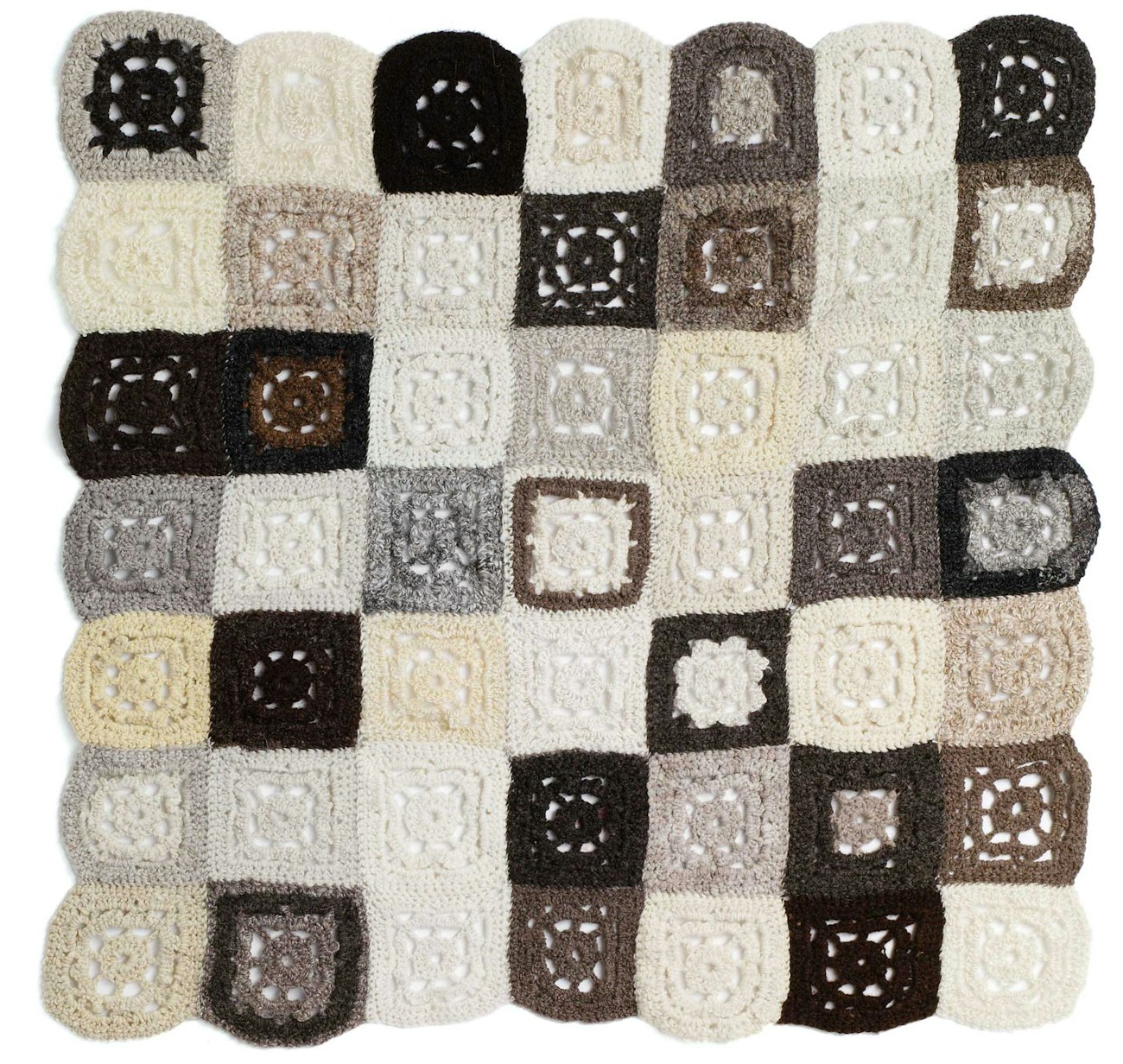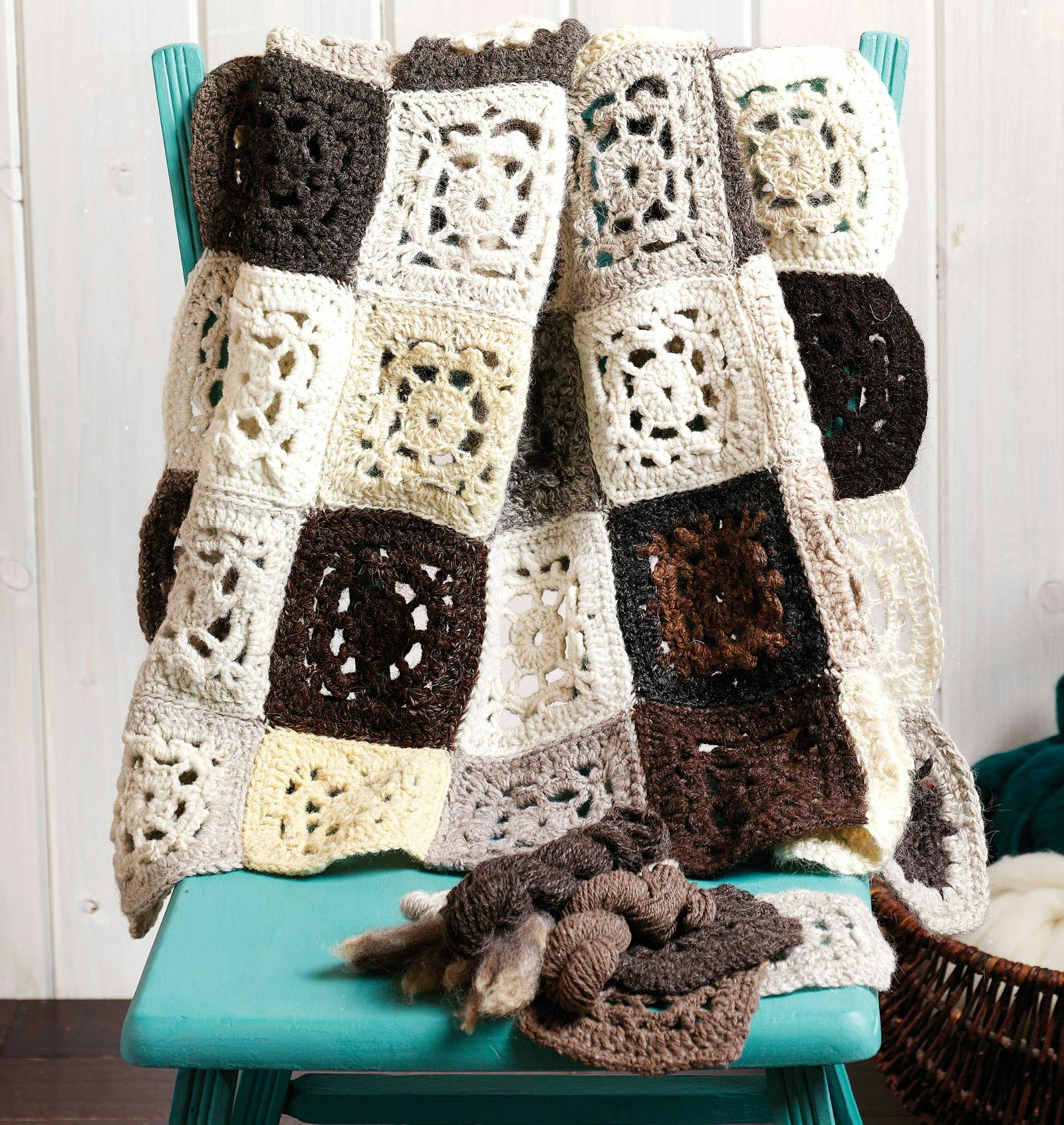https://spinoffmagazine.com/cdn-cgi/image/format=auto/https://www.datocms-assets.com/75073/1656688328-adventures-in-fleece-1.jpg?auto=format&w=900
A few years ago, I came across a breed study kit that offered 1-ounce fiber samples of numerous breeds, and I bought one. Once the kit came, I washed the samples, spun a few, and put everything away for another day. I recently brought it out and decided to work on it. By the time I had gotten back to the collection, it had grown to an overstuffed box of samples, partly from the original kit and partly from other small samples of fiber that I had collected over the years. As I started going through them, I found that there were fun parts, there were difficult parts, and at times there were parts that made me want to cry!
In the end, I not only ended up with plenty of great samples and a future project list, I learned a lot about my spinning and so much about all of the breeds of sheep I sampled. A breed study is a great way to add to your spinning enjoyment. If you only work with one type of wool, you really are missing out on a huge palette of fiber.
Finding Fleece
The first place to start is with learning about sheep and their breeds; see Resources. Once you have read about breeds and are ready to start collecting samples, there are a few things you need to think about before you buy:
[PAYWALL]
- How large a sample do you want to work with? For my sampler afghan, I started with 1-ounce samples of raw fleece. Each square takes about 30 yards.
- Do you want to work with raw wool, processed, or both? In some cases, you won’t have a choice. If you’re looking for a specific and possibly unusual breed, raw fleece will usually be easier to find.
- Do you want to work with natural-colored fleece, or would you rather work with processed and dyed roving?
Once you have decided how to proceed, it’s time to start shopping. But where? Online shopping is a great resource for finding fiber from rare breeds, but there are also pitfalls to buying without seeing first. My suggestion is to buy from vendors that you know or from those your spinning friends may know. (See Resources for some online shops.) Availability changes throughout the year, so if you don’t find what you are looking for, check back. Don’t count out eBay; you can find some deals there. However, I do suggest before you purchase that you make sure the seller is a fiber seller. It is less likely you’ll get a bad fleece from a breeder or fiber supplier than from someone who is selling fiber to get rid of it.
Once you start collecting samples, let your friends and spinning group know you are looking for new and unusual fibers to try. You will be surprised how many will come your way.
Another great place to look for that hard-to-find breed is with breeder associations. I have been able to find some great samples, and I have also found most associations to be more than willing to supply a list of breeders who will either send you a sample or sell you the whole fleece.
Fleece Preparation and Spinning
Now that you have samples to start spinning, there are a few things that you need to think about.
- If you are working with raw fleece, you will have to decide whether you want to comb, flick, or card your samples after they’ve been washed. For an ounce or less, it’s better to use handcards instead of a drumcarder. Some fibers work better carded than combed, and some work really well flicked. Be willing to use all three methods.
- If some samples seem a bit matted, try recarding them to make them more workable. That said, a bad fleece is just that—one bad fleece. Life is too short to work with samples that have way too much vegetable matter (VM). One of my 1-ounce samples was over 50 percent VM. It’s okay to put it in your compost pile. The same goes for weak and broken fleeces. Even though the breed may be hard to find, it still isn’t worth wasting your time on; keep looking.
- Don’t judge a breed by one sample. You might end up with a sample of Navajo Churro that you really don’t care for, but that doesn’t mean all Navajo Churro is like the one you have experienced.
- Just because the tips are weak doesn’t make it a bad sample. In at least one case, my samples had weak tips that were yellow. I was able to cut them off and spin a wonderful yarn.
- Just spin the yarn. I suggest that you spin each sample in your default yarn. This can be a lifelong project, so if you are planning on making a final project such as the afghan opposite, it is easier to work with a somewhat consistent yarn.
- Keep good records, and be sure to label your finished skeins. As I have been spinning my samples, I have noted in a notebook how I processed and spun the sample, where I got it, and most importantly, whether I enjoyed the sample. I use a rating system: On a scale of 1 to 10, would I be willing to explore it more? From there I started a shopping list, so that the next time I attend a fleece sale, I have a better idea of what I want to look for.
Sample to Project
Once you have gotten started and have a few skeins, you can decide if you want to keep them as they are or make something from the yarn. I suggest making something with the yarn. You will be surprised how a finished item feels when it’s crocheted, knitted, or woven. As you can see, this is not a project that you work on for just three weeks. It really is a lifelong process of learning, which for me makes it all the more fun. So once you have your afghan started, keep adding to it.
By the Ounce Afghan
Fiber 1 oz per desired square of various sheep breeds, washed and prepared. (Afghan shown weighs 22 oz and includes 49 squares.)
Yarn 2-ply and/or 3-ply; 30 yd for each square; 1,265 ypp; 14 wpi.
Hook Size G/6 (4 mm). Adjust hook size if necessary to obtain the correct gauge.
Gauge 19 dc and 8 rnds = 4"; each square measures about 4¾" by 4¾".
Notions Tapestry needle.
Finished Size 33" by 33".

By the Ounce Afghan. The squares make a beautiful natural-color patchwork blanket. Some squares use more than one yarn, and others show a natural variegation in the yarn. Top row: Ryeland, Mohair, Black Welsh Mountain, Wensleydale, Manx, Cormo, Lincoln. Second row: Cotswold, California Red, California Variegated Mutant, Shetland, Coopworth, Rough Fell, Jacob. Third row: Delaine Merino, North Ronaldsay, Polypay, Romney, Polled Dorset, Bluefaced Leicester, Montadale. Fourth row: Cormo, Finn, Icelandic, Corriedale, Gulf Coast, Shetland, Gotland. Fifth row: Cheviot, Navajo Churro, English Leicester, Merino, Teeswater, Clun Forest, Karakul. Sixth row: Hampshire, Finn, Corriedale, Columbia, Cormo, Bond, Polwarth. Bottom row: Hog Island, Wensleydale, Debouillet, Dorper, Icelandic, Friesian Milk Sheep, Border Leicester. Photo: Joe Coca
Tips for a breed sample afghan
- Once each square is complete, remember to label it.
- Be flexible with your yarn. Some of my yarn samples weren’t 30 yards, so I used other yarns to make a complete square.
- While sewing the squares together, make a key so that you will be able to identify the breeds in the future.
Notes
If using fingering-weight yarn, use a size F/5 (3.75 mm) hook. If using worsted-weight yarn, use a size H/8 (5 mm) hook. Fingering-weight squares will be smaller and worsted-weight squares will be larger than 4¾" by 4¾".
Square (make 49)
Ch 6, join with sl st to form ring.
Rnd 1 Ch 3 (counts as first dc), 15 dc in ring, sl st in top of beg ch 3—16 dc.
Rnd 2 Ch 6 (counts as 1 dc, ch 3), *skip next dc, dc in next dc, ch 3; rep from * 6 more times, sl st in 3rd ch of beg ch 6—8 ch-3 sp.
Rnd 3 Ch 1, sc in first st, (3 sc, ch 3, 3 sc) in same ch-3 sp, *sc in next dc, (3 sc, ch 3, 3 sc) in next ch-3 sp; rep from * around, sc in last st of rnd, sl st in first sc—57 sc.
Rnd 4 Ch 7 (counts as 1 dc, ch 4), *skip (3 sc, ch 3, 3 sc), hdc in next sc, ch 4, skip (3 sc, ch 3, 3 sc), (dc, ch 1, dc) in next sc, ch 4; rep from * 2 more times, skip (3 sc, ch 3, 3 sc), hdc in next sc, ch 4, skip (3 sc, ch 3, 3 sc), dc in last st, ch 1, sl st in 3rd ch of beg ch 7—8 ch-4 sp and 4 ch-1 sp.
Rnd 5 Sl st into ch-4 sp, ch 3 (counts as first dc), 5 dc in same sp, 6 dc in next ch-4 sp, 3 dc in next ch-1 sp, *6 dc in each of next 2 ch-4 sp, 3 dc in ch-1 sp; rep from * 2 more times, sl st in top of beg ch 3—60 dc.
Rnd 6 Ch 1, sc in same st, sc in next 12 sts, *3 sc in next st, sc in next 14 sts; rep from * 2 more times, 3 sc in next st, sc in last st, sl st in first sc—68 sc.
Fasten off.
Finishing
Weave in ends. Sew squares tog in a 7 by 7 grid. Block to measurements.
On any given day in Boise, Idaho, you can find Melanie Smith
making something. It might be woven, knitted, crocheted, or spun.
She loves to share her passion for all things fiber through teaching and designing. Follow her exploits at yarnsnthreads.wordpress.com or on Ravelry as yarnsnthreads.
Resources
- Fournier, Jane, and Nola Fournier. In Sheep’s Clothing: A Handspinner’s Guide to Wool. Loveland, Colorado: Interweave, 1995.
- Robson, Deborah, and Carol Ekarius. The Fleece and Fiber Sourcebook. North Adams, Massachusetts: Storey, 2011.
- Smith, Beth. The Spinner’s Book of Fleece. North Adams, Massachusetts: Storey, 2014.
- www.paradisefibers.com carries lots of general raw and processed fleece that can be purchased by the ounce.
- www.thespinningloft.com sells wonderful breed sample packs in the raw.
- www.spirit-trail.net offers processed rare breeds sold in 1-ounce packages.
- www.spunkyeclectic.com stocks all sorts of breeds and has a great fiber club with group support on Ravelry.
This project was published in the Spring 2015 issur of Spin Off.


